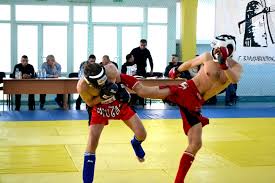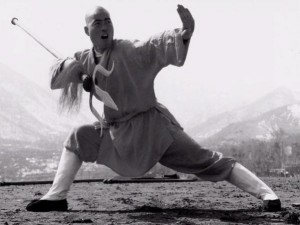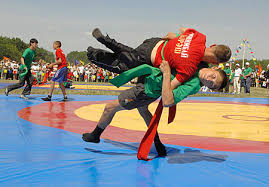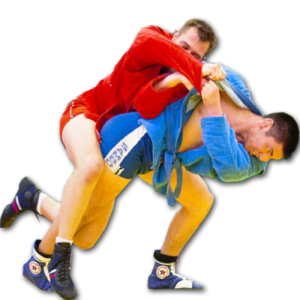What is a martial arts path?
 In short, the Martial Arts Path is the process of turning an ordinary person into a warrior. And as Carlos Castaneda put it, “to become a warrior means to consciously develop a set of specific qualities and behavior corresponding to these qualities”. Mae Oyama said essentially the same thing, but in other words: “the path of martial arts comes down to finding the true meaning of life through military practice.”
In short, the Martial Arts Path is the process of turning an ordinary person into a warrior. And as Carlos Castaneda put it, “to become a warrior means to consciously develop a set of specific qualities and behavior corresponding to these qualities”. Mae Oyama said essentially the same thing, but in other words: “the path of martial arts comes down to finding the true meaning of life through military practice.”
The problem of the Path of martial arts is pretty confused by the fact that, discussing it, most often they talk about something else. For example, they begin to talk about the principles of “yin-yang”, about the five primitives and eight trigrams, or they quote Christian Fathers and Teachers of the Church. Both do not make much sense. It is not so easy to connect Taoist natural philosophy or Christian dogma with brutal massacre and massacre.
This is best achieved by those people who like to think thoughtfully about the implementation of the principle of non-violence in battle, about the enlightened consciousness of a fighter, about demonic temptations and other interesting things from the realm of mysticism. Personal communication with some of them convinced me that theorists who were never in bloody clashes with half-drunk subjects armed with brass knuckles or broken bottles (not to mention hand-to-hand fights in war) were the most inclined to such discussions. It is theorists who exaggerate the significance of mystical research and underestimate the critical role of practice.
Confusion also contributes to the fact that the theory of the Way of Martial Arts is traditionally tried to be realized through legends, historical jokes, all kinds of parables and aphorisms. However, a modern person, deprived of a classical humanitarian education, not accustomed to think with his own head, in most cases is not able to extract at least something useful for himself from these tales. He needs a clear explanation of the essence of the problem, a kind of instruction for using his own body and spirit, similar to a memo for a car enthusiast or computer owner.
Personally, it seems to me that first I need to understand what attracts people with the art of hand-to-hand combat today, when there are so many firearms, chemical and electric weapons.
Apparently, the fact is that martial arts (of course, like some other types of hobbies) allow us to satisfy the deep needs that determine all our actions. These needs are divided in people into three main groups: vital, social and ideal (or spiritual). Satisfying vital needs ensures the biological existence of the individual; recognition by others like them is related to social needs. As for the third group, it is here that the reason for creativity, the search for truth, goodness, beauty, justice, all that together constitutes the meaning of life is hidden.
So, the applied aspect of martial arts, what is called “jutsu” (technique, tricks) in Japanese Budo corresponds to the instinct of self-preservation inherent in man as a kind of living creatures. The practice of competitive fights, demonstration and stunt performances (“Shiai”) corresponds to that side of human nature that needs to be recognized by its achievements and personal qualities. Finally, the third aspect of martial arts, called “before” 576 (the way) is associated with the improvement of personality, with the search for the meaning of life, with the acquisition of spiritual values. It is fundamentally important that in some schools these sides of martial arts merge together, in others they are implemented separately (only the technique of real combat, only sport, only psychophysical improvement).
Speaking about human needs, it should be emphasized that a person differs from animals not in vital or even social needs, but in ideal ones. In other words, in each of us, the more human, the stronger our actions are determined by the incentives of the spiritual plane. Ultimately (because at first glance this is not at all obvious) the thirst for material well-being and sexual pleasures, the desire for power or fame – all this is in people from a primitive herd of anthropoid apes.
In fact, what are the dreams of the notorious “average person” that anthropologists eloquently call the “naked monkey”? Moreover, to strain as little as possible mentally and physically, as often as possible to relax and have fun. And in the process of recreation and entertainment, the most significant for him are positive physiological sensations, especially sexual and gustatory. In short, a huge mass of people more than anything else are eager to “get high”! It’s sweet to drink, it’s delicious to eat, to mingle with people of the opposite sex, to bask in warm water, to wallow in a soft bed or on hot sand … What is there that animals don’t have? How does such behavior – in principle – differ from the behavior of a pig, which got drunk to the dump, climbed into the trough with warm water, heated in the sun, lay there and grunted with pleasure.




